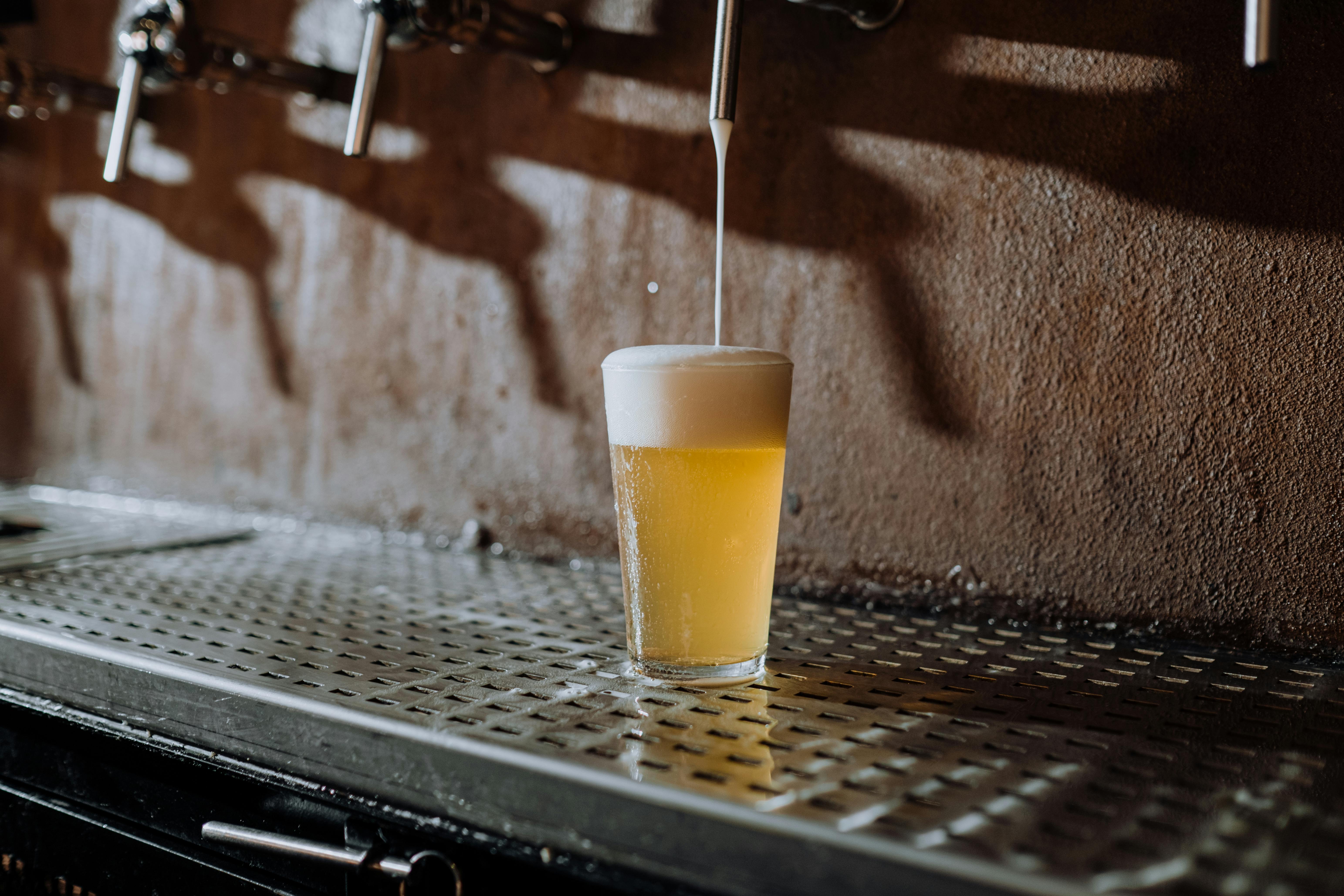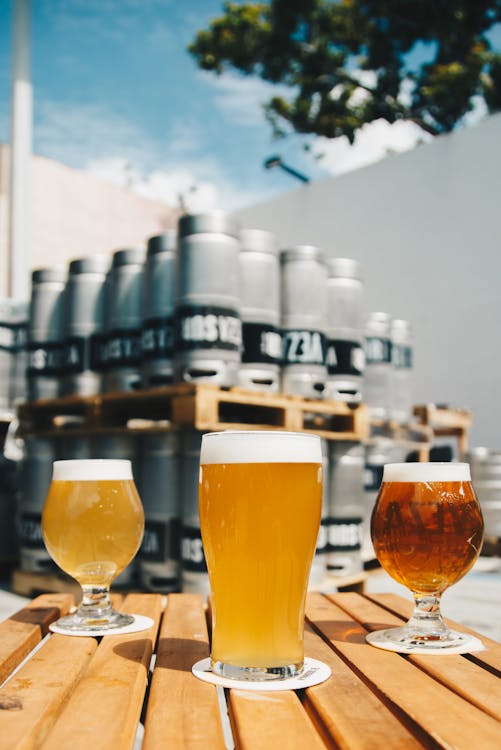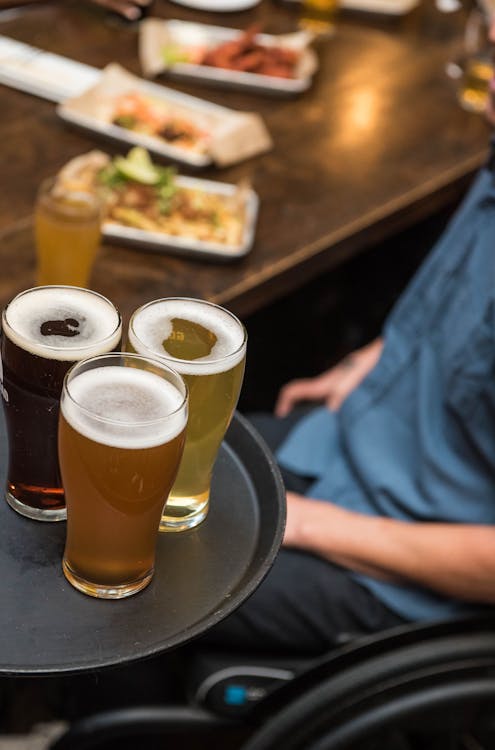At a time when health and wellness are increasingly prominent on the agenda, non-alcoholic beer has carved out its place as a segment within the beer industry that cannot be ignored. What was once seen as a temporary trend has now become an essential part of our beer culture. With growing awareness about the impact of alcohol on our health, technological innovations that improve taste and quality, and changing consumer behavior, read more about the rise of alcohol-free beer and its transformation from a trend to a new norm in this blog.
1. Consciousness

The rise of alcohol-free beer does not represent just a short-lived trend; avoiding or reducing alcohol consumption has become an enduring phenomenon in our modern society. Initiatives such as Tournée Minérale have contributed to a growing awareness of health and wellness, both before and after their launch. People have become increasingly aware of the impact of their drinking choices on their overall health and quality of life.
This awareness has led to greater acceptance of non-alcoholic options in various social situations. From casual aperitif moments to social gatherings with friends and family, alcohol-free beer has found its way into various social situations. What was once considered strange or boring is now increasingly seen as a sensible choice that fits with a healthy lifestyle.
2. Technological innovation
A crucial factor in the rise of alcohol-free beer has been advances in brewing technologies. Innovations such as membrane technology and natural fermentation have made it possible to produce alcohol-free beer without compromising on taste and quality. Consumers can now enjoy a refreshing drink without sacrificing taste or experience.
There are several techniques for crafting alcohol-free beer, but one method really stands out when it comes to preserving flavor: the use of special yeast cultures that convert only a minimal amount of sugar into alcohol. Using this approach, brewers can create alcohol-free or lightly alcoholic specialty beers with only 0.2% to 0.3% alcohol content, for example.
However, it is critical that these beers be subjected to tunnel pasteurization immediately after the brewing process. This process, in which the beer is passed through a heated tunnel, aims to kill bacteria and yeasts that may still be present after the brewing process. In this way, further fermentation is prevented and the alcohol content remains low, within the limits of what is considered alcohol-free or light alcoholic.
By using tunnel pasteurization, brewers can produce alcohol-free beer without sacrificing flavor and aroma, while meeting regulatory requirements for non-alcoholic or light alcoholic products. This method provides a perfect balance between flavor preservation and regulatory compliance.
3. Market trends
The numbers speak for themselves: sales of non-alcoholic beer continue to rise and now represent about 6% of the European beer market, according to data from the Brewers of Europe Association. These figures are not only impressive, but also illustrate the growing demand for healthy and conscious drinking alternatives among consumers.
What was once considered a niche product has now firmly established itself as an important segment within the beer industry. Breweries around the world are capitalizing on this trend by adapting their product ranges and investing in the development of high-quality non-alcoholic options. These investments include not only the production of non-alcoholic versions of traditional beers, but also the creation of entirely new flavors and styles unique to the non-alcoholic market.
The rise of alcohol-free beer has also led to a shift in consumer buying behavior. More and more people are choosing to include alcohol-free beer in their weekly shopping lists, leading supermarkets and liquor stores to expand their assortment to meet this growing demand. In addition, alcohol-free beer is increasingly seen as an essential part of the beverage menu in bars, restaurants and cafes, where it is appreciated by both consumers who want to consciously cut down on alcohol and those who simply enjoy its taste and refreshment.
4. Alcohol-free beer in Belgian beer culture
In Belgian beer culture, the emergence of alcohol-free beers represents a significant shift, but does not mean the end of traditional beers. On the contrary, it adds a new chapter to the story of Belgian beer, in which health and well-being are increasingly important aspects.

The rise of alcohol-free beer has encouraged breweries in Belgium to expand and innovate their range, with new alcohol-free versions of classic Belgian beers and entirely new flavors and styles unique to the Belgian market. This diversity shows not only the growing demand for non-alcoholic options, but also the ability of Belgian brewers to meet the changing needs of consumers.
5. Abundance of flavor variations
The era when alcohol-free beer was synonymous with a limited range of flavors is a thing of the past. Contemporary breweries have not only invested in the technologies to produce alcohol-free beer, but have also made significant efforts to refine and vary flavor profiles. The result? A plethora of choices that match and sometimes exceed the diversity of traditional beer.
Brewers challenge themselves to be creative and experiment with a wide range of ingredients to produce alcohol-free beers that not only excite the taste buds, but also pique the curiosity of consumers. Brewers often incorporate ingredients such as fruits, herbs and spices into their recipes, making alcohol-free beer both flavorful and refreshing.
6. The social aspect of non-alcoholic beer

In addition to providing a healthy and tasty option, alcohol-free beer also plays an important role in social interactions. With more and more people opting for a conscious lifestyle and changing social norms, alcohol-free beer is becoming increasingly accepted and even welcomed at social occasions. It allows people to participate in social gatherings and parties without worrying about the impact of alcohol on their health or their ability to drive safely. This contributes to an inclusive drinking culture where everyone feels welcome and comfortable, regardless of their drinking preferences.
A lasting shift in our drinking culture
The rise of alcohol-free beer marks a lasting shift in our drinking culture, driven by a growing awareness of health and wellness. From informal gatherings to social events, alcohol-free beer has found its way into various situations and is no longer seen as an alternative, but as a conscious choice that fits a healthy and balanced lifestyle. With a plethora of flavor variations, technological innovations and social benefits, alcohol-free beer remains an integral part of our modern drinking culture.

